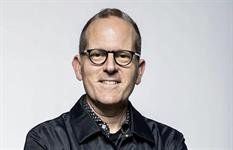The final numbers have been counted at WPP and the last of the marketing services holding companies has now reported its Q2 earnings.
For CEO Mark Read, it was his last analyst call leading WPP and new CEO Cindy Rose will take over on September 1. As the company stated in a pre-earnings profit warning a month ago, the results weren’t pretty, with like-for-like revenue down 5.8% year over year, dividends cut, cashflow weakness and a slower new business environment. The company cut jobs by 3.7% in the first half of 2025 and now employs 104,000 people.
WPP’s six major networks, including Burson, now comprise about 95% of the company. The PR segment of the business, which is pretty much Burson now that FGS Global has been sold, was the worst-performing sector, with year-over-year revenue down 7.8%, having been down 6% YoY in Q1. Burson was down 5% in calendar year 2024 according to PRWeek’s latest Agency Rankings.
On the PR performance, Read said: “This performance reflects a more challenging environment for client discretionary spend, in particular, in Europe and across smaller local clients. Looking forward, we are encouraged by improved momentum on new business in North America.”
He dubbed Burson the second-biggest PR firm in the world in his comments, which seems hard to believe given the agency’s poor performance over the past 18 months and Edelman and Weber Shandwick well in the mix at the near $1 billion revenue threshold.
In H1, the PR segment, which comprises 10% of WPP’s overall business, recorded revenue of £335 million, down from £568 million in the equivalent period last year, when FGS Global was part of WPP. Profit was £39 million compared to £85 million last year. Read said the sale of FGS Global to private equity firm KKR created close to $1 billion in value for WPP.
On the bright side, the profit margin from PR was 11.6%, higher than WPP’s overall margin of 8.2%, although down from 14.1% last year, again when FGS was still part of the holding company. Burson won assignments from Levi Strauss & Co. in the U.S. and TKMaxx in Europe in H1. It also launched its Reputation Capital and Decipher Tech service offerings.
Ogilvy PR doesn’t report its numbers through the public relations segment, rather it is included in global integrated agencies with the rest of Ogilvy, which had a very poor first half of the year.
WPP CFO Joanne Wilson said on the analyst call: “Ogilvy declined high single digits in the first half and was down double-digit in the second quarter, impacted by cuts in client spending, in particular, in CPG, tech and government.”
The overall CPG segment across WPP declined 8.3% in H1, due to cuts in client spending and the loss of a large client in North America, which wasn’t specified but is likely to be the Coca-Cola media account. WPP also lost the Mars media account in June. Both assignments went to French competitor Publicis Groupe.
Overall, Read said new business has been running at half the normal rate for this time of year and “clients have been dealing with a lot of short-term issues, whether that’s pressure on consumer spend or the impact of tariffs or commodity prices, and these are delaying pitches and prolonging decision-making.”
He added that he’d never experienced a moment where he’s seen such a divergence in performance between clients, with some growing and some cutting back.
Analysts following WPP outlined several options for it to consider in returning to growth, including acquisitions, disposal of non-core or slower growth businesses or suspending dividends until growth returns.
In an analyst’s note from JPMorgan last month, the bank outlined strategic options for WPP’s new CEO Cindy Rose, including: “It could sell its remaining PR activities where there could be good demand from private equity and rival communications companies — we would see limited/no dis-synergies for the residual group.”
Burson global CEO Corey duBrowa will be hoping the green shoots of recovery Read referred to in terms of improved new business momentum in North America at the iconically named PR firm start to bear fruit soon.
Otherwise, the attention of the new leadership at WPP might alight on the “slower growing” Burson business as one of its disposal possibilities amid its attempts to raise cash and change its business mix.
CEO Mark Read on data offerings:– Our agencies such as VML and Ogilvy have completely transformed the work they do, developing great ideas that work on TikTok and YouTube as well or better than they do on NBC or ITV. We now lead our industry, in my view, for our creative reputation. CEO Mark Read on AI:– We recently took a client’s Super Bowl commercial that they shot, and remade it using Google Veo 2 inside [WPP production firm] Hogarth. If you run the two commercials side by side, people don’t know which one was done with AI and which one was done in a real shoot. That’s an example of a tremendous growth opportunity. Currently, we don’t produce television commercials, but this gives us the ability to produce even more work. At the core, we created a commercial entirely in AI that they ran on network television in the U.S. CFO Joanne Wilson on Q3 trading:– It’s early in Q3. The trading environment does remain challenging, and I’d want to avoid getting into month-by-month detail, but there’s nothing we are seeing that would change our revised guidance range. WPP Media CEO Brian Lesser on WPP Open:– WPP Open is the operational backbone of our business that is powered by Open Intelligence. This platform is more than workflow automation. It’s how we deliver media infused with AI and supported by one of the most advanced data models in the industry. We now have more data than any of our competition reaching 5 billion consumers, connecting intelligence of all forms, including IDs across a vast federated ecosystem. Our platform connects hundreds of data sources, publisher, retail, platform, client-structured and unstructured, and extracts insight through federated learning and AI-native tools. – That’s how we move from reactive to predictive, by optimizing hindsight to anticipate what’s next. It will separate us from our competitors and allow us to operate at speed for our clients. This isn’t theoretical. It’s live, it’s adopted and it’s already delivering measurable value for our clients. For a brand in a highly impulsive category, our platform used behavioral signals, such as commuting patterns and content consumption habits, to identify moments of peak buying potential. That campaign drove a 10x improvement in reach to high-propensity buyers. In another case, we doubled in-store sales for a CPG brand by predicting exactly when and where to engage GenZ shoppers near retail hotspots. |















